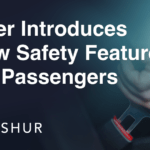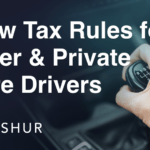
Driving Uber in Post-Lockdown UK
The COVID-19 pandemic has affected our everyday lives. Unprecedented shifts in rider behaviour have further impacted the lives of rideshare drivers. The hustle and bustle of ‘normality’ in cities like London, Birmingham and Manchester changed, beginning to dramatically decline in early March (Citymapper Mobility Index).
We take a look at the challenges you’ve faced as rideshare drivers during this period, and early indications of what the new normal looks like. Scroll down for top tips on adapting to post-lockdown rideshare.
The challenges faced by rideshare drivers during the pandemic
On March 23rd, the UK officially entered lockdown. Non-essential shops were forced to close. Pubs, cafes, restaurants, gyms, cinemas, theatres and schools – all closed. And the nation was urged to work from home where possible.
Of course for your industry, by its very nature, working from home is not an option. Lockdown meant ghost town. Taxi ridership hit an all-time low: 81.1% of drivers we asked said that they had taken a break from driving during the pandemic, with 61.5% saying it was due to lack of demand and therefore earnings. It just wasn’t worth it. Here are some more stats shared by drivers like you:
- Peak social hours of 7pm-2am on Thursday, Friday and Saturday became non-existent, with 53.9% of drivers noting little difference between the weekend and weekdays.
- Travel and events were cancelled indefinitely. Well-known rider hotspots became a thing of the past. Drivers were mostly picking up from hospitals, supermarkets and residential areas.
- Staying local, 57.9% of our drivers stated their average distance per trip was less than 5 miles. And so the lonely wait time between rides became longer.
- Drivers picked up delivery work – 38.9% said they had joined food delivery platforms to compensate for their rideshare earnings.
It’s been hard. But as the lockdown begins to lift, a sense of normality has begun to return.
It’s natural to feel anxious at the prospect of returning to work. Mental health is an incredibly important topic for everyone, perhaps now more than ever.
Top tips for driving towards a new normal
There is no doubt that COVID-19 will affect rider behaviour. Short-term or long-term, we’re yet to find out. But let’s take a look at what we know about your ‘new normal’.
Stay on the road and keep earning
You may be looking for other ways to make money. Food delivery and courier services have become increasingly popular during the pandemic. INSHUR customers are automatically covered to deliver food. Click here to find out more about your delivery options.
Private Hire vs. Public transport
Dynata reported that in this new normal consumers want to feel in control of their space, as much as possible. This could make taking a cab more attractive than getting on the train, tube or bus. As offices begin to reopen and increasingly the daily commute is back on, our research tells us that there has already been a rise in passengers looking for rides before 9am. So consider changing your working hours to start earlier so you can pick up the commuter crowd.
The return of social hours
Saturday July 4th for most of England marked the return of several types of business, including pubs, cafes and restaurants. Dubbed ‘Super Saturday’, town and city centres started to come alive once again. Bear this in mind – with the country’s nightlife opening up, weekend peak social hours could make a reliable return and see drivers’ trips increase.
Ongoing cleanliness
The hope of increased trips does, however, mean increased contact. In the report by Dynata, proof that the car had been cleaned between passengers was the most important thing to riders when taking a cab.
No mask, no ride
To help reduce the risk of spreading the virus, both drivers and riders must now wear a face covering during every trip. This looks set to stay, so click here for a useful video on how to wear your face covering effectively.
Sources:






